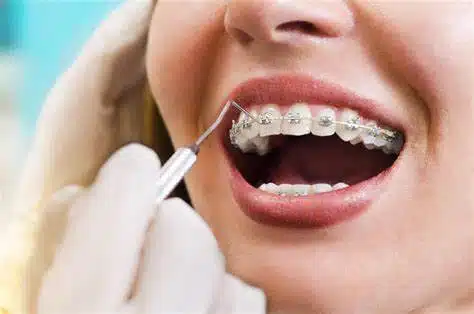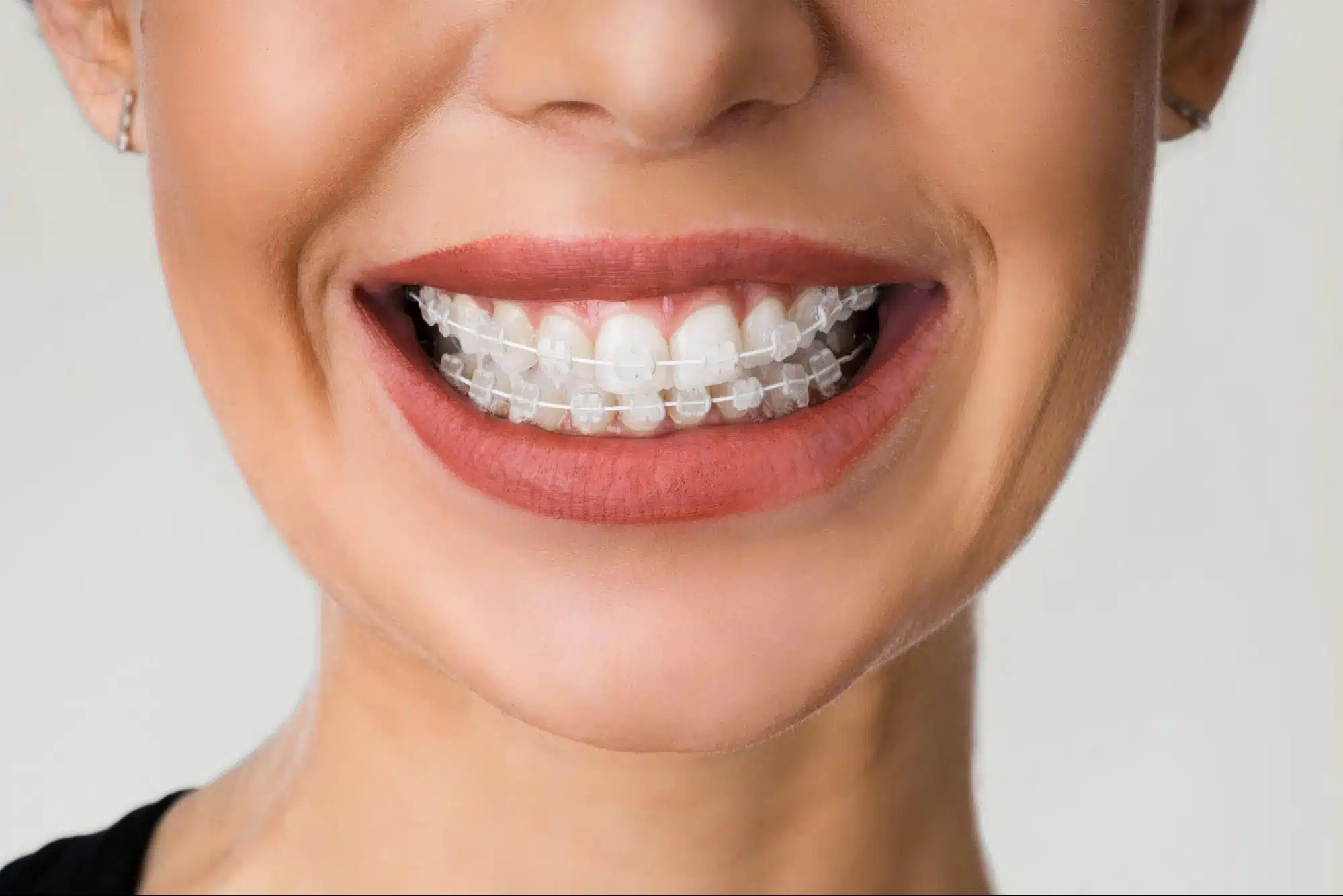
How Clear Braces vs. Metal Braces: Which Is Right for You?
If your teeth aren’t straight, you’re not alone—and getting braces is one of the most common ways to fix it. Today, braces aren’t just the shiny metal ones you might remember from school. Technology has improved a lot, and now there are more choices to fit different needs and lifestyles.
One of the biggest questions people ask is: What’s the difference between clear braces and metal braces? And more importantly, which one should you choose?
In this article, we’ll break down everything you need to know about clear braces vs. metal braces. From how they look to how much they cost, and what they feel like day to day, you’ll get real answers that help you decide what fits you best. If you’ve been unsure about which way to go, this guide will help clear things up—without all the confusing terms or pressure.
How Braces Work: A Quick Overview
Braces straighten your teeth by gently moving them into the right position over time. They do this with the help of small brackets that are glued to your teeth and connected by a thin wire. The wire puts steady pressure on your teeth, which slowly shifts them where they need to go. It might feel a little tight at first, but that’s how the process works.
No matter what kind you choose—clear or metal—the basic idea stays the same. Both types use brackets and wires to fix things like crowding, gaps, and bite problems. The main difference is what they’re made of and how they look. Metal braces use stainless steel, while clear braces use tooth-colored or see-through materials that blend in more with your smile.
So when it comes to clear braces vs. metal braces, they work the same way—but the experience wearing them can feel a bit different.

What Are Metal Braces?
Metal braces are the original type of braces most people are familiar with. They’re made of stainless steel and include small metal brackets that are attached to each tooth. A wire connects the brackets and helps apply pressure to move your teeth over time.
These braces have been used for decades and are still one of the most common types today. Dentists and orthodontists trust them because they work well and can fix a wide range of problems—everything from crooked teeth to major bite issues. They’re especially helpful when someone needs more complex treatment.
One thing to know is that metal braces are easy to notice, especially when you smile or talk. But the good news is, they’ve come a long way from what they used to be. Today’s metal braces are smaller, flatter, and more comfortable than ever before.
If you want something strong and proven to work, metal braces are still a top choice for many people—kids, teens, and adults alike.

What Are Clear Braces?
Clear braces, also called ceramic braces, work the same way as metal braces but look different. Instead of shiny metal brackets, clear braces use brackets made from tooth-colored or see-through materials. This makes them harder to notice when you smile or talk.
Many people choose clear braces because they want a more natural look during treatment. They’re popular with older teens and adults who feel self-conscious about wearing braces but still want a reliable option to straighten their teeth.
While they blend in better, clear braces still use the same method as metal braces—brackets, wires, and steady pressure to shift teeth into the right place. That means they’re just as effective for fixing alignment problems.
The only real difference is in care. Because the brackets are lighter in color, they can stain more easily if you don’t brush well or eat a lot of dark-colored foods and drinks. With good oral hygiene, though, this usually isn’t a big problem.
If you’re looking for something more discreet but still strong and effective, clear braces might be the better fit for your needs.
Key Differences Between Clear and Metal Braces
When looking at clear braces vs. metal braces, it’s important to understand how they compare in everyday use. Here’s a closer look at how they stack up:
Appearance
Metal braces are easy to see because the brackets and wires are silver. For some people, this isn’t a big deal. Others, especially teens and adults, may want something more discreet. Clear braces are made to blend in with your natural tooth color, so they’re less noticeable in photos or face-to-face conversations. If you care a lot about how your braces look, clear braces usually win in this area.
Material
Metal braces are made from stainless steel, which is very strong and long-lasting. Clear braces are made from ceramic or clear materials. They still do the job well but may need a little more care, especially during meals or brushing.
Durability
Metal braces are tough. They rarely break and can handle pressure from tougher dental cases. Clear braces are strong but more likely to chip or crack if something hard hits them or you eat the wrong type of food. This is why orthodontists may not recommend clear braces for people who play contact sports or need a lot of tooth movement.
Treatment Time
Both types of braces are effective, but metal braces sometimes work faster. Since the material is stronger, the brackets can apply more force without breaking. For people with complex issues, metal braces may shorten treatment time slightly.
Comfort
Braces can feel uncomfortable in the beginning. Both types now come with smaller, smoother brackets that don’t irritate the mouth as much as older designs. Most people say the comfort level is about the same once they get used to them.
Staining Risk & Maintenance
Clear braces can stain more easily if you eat or drink things like soda, coffee, or spaghetti sauce. Brushing and rinsing well can help prevent this. Metal braces don’t stain at all, but again, they’re more visible from the start.
Cost
Clear braces usually cost more than metal braces because of the materials used. That said, the difference isn’t always huge. Many dental insurance plans help pay for both types, but check with your provider to be sure.
Pros and Cons Comparison
If you’re deciding between clear braces vs. metal braces, here’s a quick breakdown of the main pros and cons for each.
Metal braces are very strong and hold up well, even in tough cases. They don’t stain, and they’re usually the more affordable option. They may also work a little faster for some patients. The downside is they’re easy to see and not as subtle in appearance.
Clear braces are much less noticeable and blend in with your natural teeth, which is great if you’re concerned about how they look. However, they can stain if not cared for properly, and they’re slightly more fragile. They also tend to cost more than metal braces, and in some cases, treatment may take a bit longer.
Overall, metal braces win on strength, cost, and speed. Clear braces win on looks. Comfort is usually similar for both once you get used to them.
Final Thoughts
Metal braces are strong, reliable, and usually more affordable. Clear braces are harder to see and more appealing for people who want a less noticeable option. One isn’t better than the other—they just fit different needs.
When choosing between clear braces vs. metal braces, it really comes down to what’s most important to you. Think about your budget, your daily routine, and how you feel about visibility.
Whatever you pick, you’ll be taking a solid step toward a healthier, straighter smile—and that’s what matters most.
Take the First Step Toward a Confident Smile
Choosing the right type of braces starts with the right advice. A consultation with a licensed orthodontist at Elite Orthodontics gives you a clear plan based on your smile, needs, and goals. You’ll have the chance to ask questions, compare options, and make an informed decision—without pressure.
With the right support and expert care, a straighter, healthier smile is fully within reach. The first conversation can make all the difference.
Contact us today to schedule your consultation and find the solution that fits you best.


